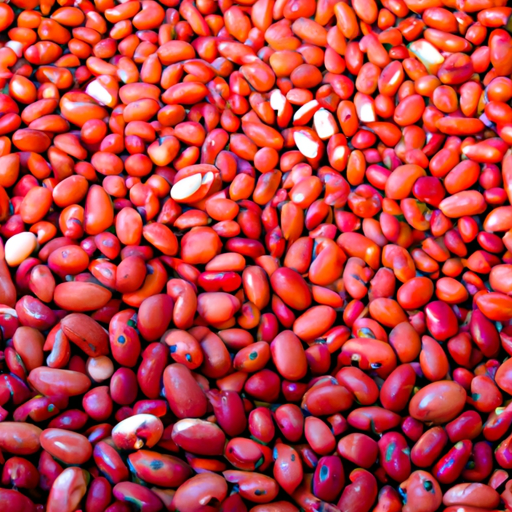Exploring the Nutty and Versatile Moth Bean
If you’re someone who loves exploring unique ingredients, then get ready to embrace the moth bean! Also known as “matki” in Hindi and “Turkish gram” in English, these tiny legumes pack a nutty flavor and boast an interesting culinary history. Let’s dive into the world of moth beans, where taste, versatility, nutrition, and curiosity blend together perfectly!
A Taste Worth Savoring
Moth beans are known for their distinctive taste – a delicate nuttiness with a hint of earthiness. When cooked, they develop a creamy texture and easily absorb the flavors of the spices and seasonings they are cooked with, lending a rich and satisfying taste to any dish. This unique flavor profile makes moth beans a delightful addition to a variety of recipes.
Versatility in the Kitchen
Moth beans find their place in diverse cuisines around the world. In Indian cooking, they are commonly used to prepare curries, stews, and lentil-based dishes. These beans hold their shape well, making them an excellent choice for gravies and hearty dishes. Additionally, they can be sprouted and used in salads or added to wraps for a nutritious crunch.
Outside of Indian cuisine, moth beans can be incorporated into salads, soups, and even patties or fritters. Their versatility in both savory and sweet recipes makes them an exciting ingredient to experiment with and elevate the flavors of your favorite dishes.
Nutritional Powerhouses
Moth beans might be small in size, but they come packed with a range of essential nutrients. These legumes are an excellent source of plant-based protein, making them a great choice for vegetarians and vegans. Additionally, they contain dietary fiber, which aids in digestion and helps keep you feeling full for longer.
Rich in vitamins and minerals such as iron, potassium, and magnesium, moth beans contribute to promoting a healthy heart, improving bone health, and boosting overall immunity. Adding moth beans to your diet can provide an array of health benefits while creating delicious meals.
A Walk Through History
To satisfy the curious minds among us, let’s take a quick trip down the historical lane of moth beans. Native to India, moth beans have been cultivated for thousands of years and find a prominent place in Indian culinary traditions. They were traditionally grown in dry regions and served as a staple food for their nutritional density and ability to thrive with minimal water requirements.
Throughout history, moth beans have been revered for their ability to nourish and sustain people during challenging times. The adaptability and resilience of these legumes have made them an integral part of various regional cuisines.
Moth beans, with their unique taste, versatility, and nutritional benefits, are a delightful addition to the culinary world. Whether you’re exploring Indian cuisine or looking to add a new ingredient to your favorite recipes, moth beans offer a delightful and nutritious experience. So, grab a pack of moth beans from your local store and embark on a culinary adventure that pays homage to this tiny but mighty legume.
Moth Beans
- Origin: Moth beans, scientifically known as Vigna aconitifolia, originated in India and are primarily grown in arid and semi-arid regions of South Asia.
- Alternative Names: Moth beans are also known by various names such as matki, Turkish gram, dew bean, moth dal, and Bella bean.
- Appearance: Moth beans are small, oval-shaped legumes with a yellow or light brown color. They have a firm texture and are similar in appearance to mung beans.
- Common Uses: Moth beans are commonly used in Indian cuisine and are an important ingredient in dishes like dal, curries, and sprouts. They are also used in certain snack preparations, such as pakoras and fritters.
- Nutritional Benefits: Moth beans are highly nutritious and are a good source of protein, dietary fiber, vitamins (including folate, thiamine, and vitamin B6), and minerals (such as iron, magnesium, and phosphorus). They are low in fat and cholesterol and provide essential amino acids.
- Unique Properties: Moth beans have the unique ability to survive in harsh and dry conditions, making them well-suited for cultivation in arid regions. They also have a relatively short growing cycle, allowing farmers to plant them as a fast-growing and climate-resilient crop.
- Historical Significance: Moth beans have been cultivated in India for centuries and are an integral part of Indian regional cuisines, especially in states like Maharashtra, Gujarat, and Rajasthan. They were traditionally considered an affordable and accessible food source in these regions. Additionally, sprouted moth beans have been consumed for their nutritional benefits in Ayurveda, the traditional Indian system of medicine, for their cooling properties and as a digestive aid.




Use the share button below if you liked it.
It makes me smile, when I see it.